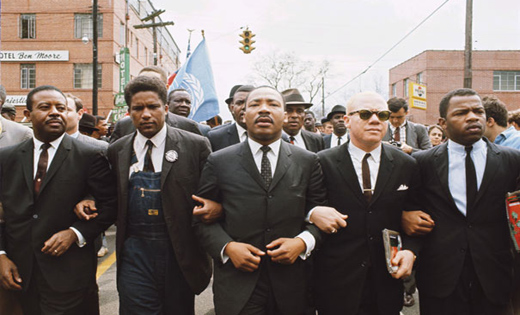
In 1954, when the U.S. Supreme Court ruled on Brown v. Board of Education, the Gross Domestic Product (GDP-the value of all goods and services produced in the United States) per capita of the United States stood at $15,745. In September of that year, a young man, the Rev. Dr. Martin Luther King Jr., became pastor of Dexter Avenue Baptist Church in Montgomery, Alabama. In December 1955, Rosa Parks refused to give up her bus seat, and the Montgomery Bus Boycott would be launched. Soon everyone would know who Dr. King was and what the Montgomery Improvement Association was.
In 1967, the GDP per capita had grown to $21,913. After leading fights to end Southern segregation, gain the passage of the 1964 Civil Rights Act and the 1965 Voting Rights Act, and winning the Nobel Peace Prize, Dr. King reflected that year on what had been accomplished, and what was left undone, in his book “Where Do We Go from Here: Chaos or Community?” He had left the South and spent time in the ghettos of Los Angeles and New York. As he strongly argued in his book, the success of the civil rights movement had been tremendous in changing the racial landscape of the South. But on some fronts, like school segregation, little had changed. And in the North, the economic plight of the African American ghettos appeared untouched.
Yet, pondering the rapid gain in America’s wealth over that period, Dr. King wrote with an optimism that a nation that could produce such wealth could do better. He understood what many do not. The point of GDP as a measure is to gauge what a society can do. It tells how much in resources it has that it can bring to bear on solving problems.
In his speech to the Southern Christian Leadership Council, where he laid out the thesis of his book, Dr. King said:
“We must develop a program that will drive the nation to a guaranteed annual income….The problem indicates that our emphasis must be twofold. We must create full employment or we must create incomes….Now our country can do this. John Kenneth Galbraith said that a guaranteed annual income could be done for about $20 billion dollars a year. And I say to you today, that if our nation can spend $35 billion dollars a year to fight an unjust, evil war in Vietnam, and $20 billion dollars to put a man on the moon, it can spend billions of dollars to put God’s children on their own two feet right here on Earth.”
Dr. King preached the “politics of the possible” but today, unfortunately, we are dominated by a politics of the impossible. Rather than see what is possible, we get a set of bad choices. Because of globalization, because of technical advances, politicians tell us we must accept a new normal of unsteady jobs and low pay. Yet, our GDP has grown to $50,805 for every man, woman and child in the country. This makes us a nation more than twice as wealthy as when Dr. King lived. So, why are fewer things possible?
This week, the Center for American Progress (CAP) released a report of the Commission on Inclusive Prosperity. Key to understanding the report is its very powerful exposition of life in other industrialized countries; countries that face the same forces of globalization and same technological advances that fuel the world’s economy today. Rather than seeing that a $7.25-an-hour job at Walmart is an inevitable result of these forces, the report shows that other countries pay such workers much higher wages. Yet, Walmart is profitable in those countries.
Our low wages and lack of labor rights are a policy choice. This is a point that AFL-CIO President Richard Trumka made last week at a national summit focused on policies to raise wages.
The world of the possible is opening when voices of the “smart” policy set, like the International Monetary Fund and the Organization for Economic Cooperation and Development, all warn that growing inequality is not good, and it is not inevitable. This is 50 years after Dr. King’s observations, but not too late.
Published at AFL-CIO Now.
William Spriggs serves as chief economist to the AFL-CIO, and is a professor in, and former chair of, the Department of Economics at Howard University. Spriggs assumed these roles in August 2012 after leaving the executive branch of the U.S. government.
Photo: Rev. Dr. Martin Luther King Jr. at the famous Selma to Montgomery march. | Steve Schapiro/Corbis










